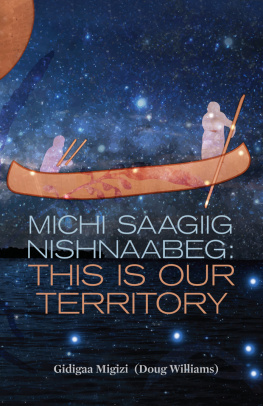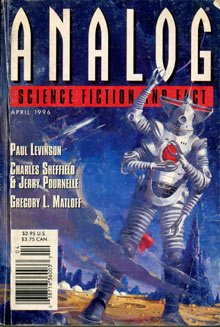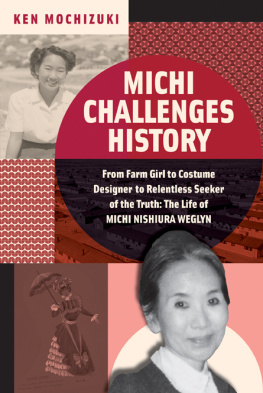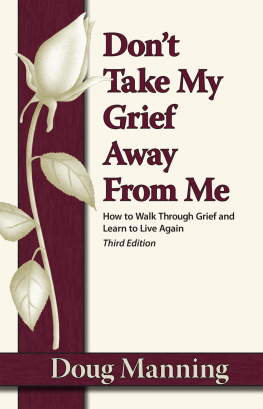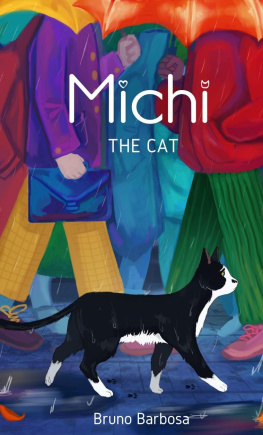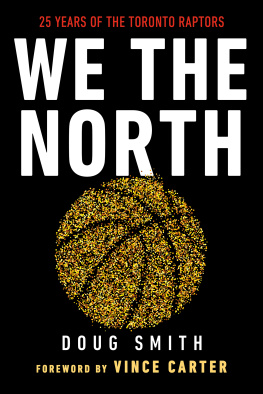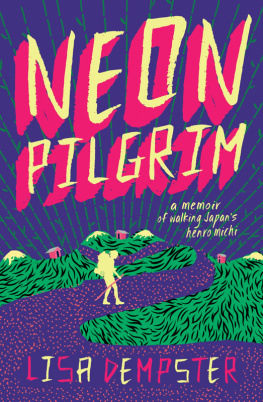Gidigaa Migizi (Doug Williams) - Michi Saagiig Nishnaabeg: This is Our Territory
Here you can read online Gidigaa Migizi (Doug Williams) - Michi Saagiig Nishnaabeg: This is Our Territory full text of the book (entire story) in english for free. Download pdf and epub, get meaning, cover and reviews about this ebook. year: 2018, publisher: ARP Books, genre: Religion. Description of the work, (preface) as well as reviews are available. Best literature library LitArk.com created for fans of good reading and offers a wide selection of genres:
Romance novel
Science fiction
Adventure
Detective
Science
History
Home and family
Prose
Art
Politics
Computer
Non-fiction
Religion
Business
Children
Humor
Choose a favorite category and find really read worthwhile books. Enjoy immersion in the world of imagination, feel the emotions of the characters or learn something new for yourself, make an fascinating discovery.
- Book:Michi Saagiig Nishnaabeg: This is Our Territory
- Author:
- Publisher:ARP Books
- Genre:
- Year:2018
- Rating:5 / 5
- Favourites:Add to favourites
- Your mark:
- 100
- 1
- 2
- 3
- 4
- 5
Michi Saagiig Nishnaabeg: This is Our Territory: summary, description and annotation
We offer to read an annotation, description, summary or preface (depends on what the author of the book "Michi Saagiig Nishnaabeg: This is Our Territory" wrote himself). If you haven't found the necessary information about the book — write in the comments, we will try to find it.
Michi Saagiig Nishnaabeg: This is Our Territory — read online for free the complete book (whole text) full work
Below is the text of the book, divided by pages. System saving the place of the last page read, allows you to conveniently read the book "Michi Saagiig Nishnaabeg: This is Our Territory" online for free, without having to search again every time where you left off. Put a bookmark, and you can go to the page where you finished reading at any time.
Font size:
Interval:
Bookmark:
Chimiigwech to a whole number of people who helped shape my Nishnaabeg Knowledge and took part in my upbringing: my grandmother Adeline, my mother Amelia, and my auntie Peggy. Chimiigwech especially to Madden who is my grandmothers brother, and from whom I got much of the knowledge I convey in this book. A special thank you to his friend, James Makoons Taylor, and to Tom Tinker Taylor, with whom I spent much time on the land as a child.
Chimiigwech to Leanne Betasamosake Simpson for recording, transcribing and editing these stories over the past several years, for finding funding for this project and for supporting this work through the publication process. Thank you to Julie Kapryka for recording, transcribing and editing the two Nokomis and the Shkin stories. Thanks to Todd Besant for his careful edits and to Madeline Whetung for her written feedback. Chimiigwech to Elizabeth LaPense for the cover art.
Chimiigwech to another group of people whose help I cherish: my partner Christine Cairns, my children, Donna, Keesic, Saga, Sarah, and Kathleen, Alice Williams, Winston Taylor, Merritt Taylor, Mike Henry, Bill Fox, Paula Sherman, Christine Sy, Drew Hayden Taylor, Anne Taylor, Krista Coppaway, Brenda Maracle OToole, Dawn Lavalle Harvard and the staff at First Peoples House of Learning at Trent University, students throughout the years particularly Phil Abbott and Sarah Gauntlet, the staff at ARP Books, the Chief and Council of Curve Lake First Nation, and the Indigenous Arts Program of the Ontario Arts Council.
DOUG WILLIAMS (Gidigaa Migizi) is Anishinaabe and former Chief of Mississaugas Curve Lake First Nation. He is currently Co Director and Graduate Faculty for the Indigenous Studies Ph.D. Program and oversees the cultural and spiritual component of the program. He is a member of the Pike Clan, and was one of the first graduates of what is now called Indigenous Studies at Trent University in 1972. He is a Pipe Carrier, Sweat Lodge Keeper, and ceremony leader. He is a language speaker and considers himself a trapper, a hunter and a fisher. Beyond his work in the academy, he is active at the community level and works to ensure that Indigenous Knowledge is maintained within the community.

We should begin with a retelling of our Michi Saagiig creation story, because origin stories are stories that hold our fundamental values and ways of being in the world. There are at least four creation stories and some Elders say there are seven. There are also many, many versions of each of these stories, and although they are never dramatically different from each other, I think it is important to note that there are different tellings of these stories by Elders and storytellers and unique versions in different areas of Nishnaabeg territory. This is the second time life was created.
A long time ago, way back in time, it was total darkness. There was nothing. At this time the Gzhwe Manidoo had a dream. In that dream, Gzhwe Manidoo saw the world that we know today. Gzhwe Manidoo saw the mountains, the plains, trees, the rocks, deserts, great rivers, animals, birds flying and Gzhwe Manidoo saw humans. The dream stuck with the Gzhwe Manidoo and Gzhwe Manidoo thought that it must come aboutit must happen.
It is difficult to translate Gzhwe Manidoo into English because the English language tends to describe Gzhwe Manidoo as a he, but Gzhwe Manidoo is neither man or woman, there is no gender and it is important to remember that is the way we describe things in Nishnaabemowin. That is a big distinction, and it is important to remember when we are telling the story in English. Gzhwe Manidoo is the one that loves us unconditionally. They are the one that we sometimes call creator, but Gzhwe Manidoo is really a benevolent spirit that accepts our most naked truths and loves us anyway.
The earth happened and everything was created instantly and everything was beautiful. This went on for a long time. Everybody was getting along in Nishnaabemowin we call it kina-bimaadiziwin. It was harmonious. It was an ideal environment. Everyone was kind. Everyone lived in peace with each other, including the animals.
That continued, until one day things started to go bad, they started to go wrong. Things did not work out. Everything died off, and nobody knows why that happened. It could be that life is actually not that easy to keep. Gzhwe Manidoo wanted us to be so good that when things started to happen even with the Gzhwe Manidoos creation something went wrong. Everything died off. A few things were saved. Apparently the elements were saved. There was still the sun, the great waters, the land, but everything living had died off. This bothered Gzhwe Manidoo. Gzhwe Manidoo was upset.
The spirits that lived in the sky, went to Gzhwe Manidoo and asked if they could help. They knew Gzhwe Manidoo was feeling badly because the place they created has gotten into trouble. So Gzhwe Manidoo asked one of the beings to go down and see if creation could be fixed. That spirits name was Gizhiigokwe, which means Sky Woman. Gizhiigokwe decided to come to earth and find a spirit partner. We are not exactly sure who that partner was, because she asked Gzhwe Manidoo for a partner so that they could create humans. Other animals were also involved in helping her create humans. She came from the Sky. The Haudenosaunee also have this story about a spirit that comes from the Sky. We were peacekeepers and we travelled all over north eastern North America sharing our versions of the story.
Gizhiigokwe came to try and create humans. The first time she tried, they died off. She had two kids, and they died. Something was not working right for the Gzhwe Manidoos dream. It didnt come together. Gizhiigokwe went back to the Spirit World and told the Gzhwe Manidoo that she tried but that it didnt work out.
Another thing that happened at this point was a great flood. Things were happening physically on earth. The great flood changed the physical surface of the earth.
Gzhwe Manidoo told Gizhiigokwe to not give up and to keep trying to make Gzhwe Manidoos dream a reality. Gizhiigokwe went back to earth. One of the animals from the first creation was the Turtle because it could live in the water. When the flood happened only the fish and the water animals like the beaver survived because they could swim. When Gizhiigokwe came down again, it was all water. Gizhiigokwe couldnt settle anywhere because she couldnt swim. Water was a strange element to her because she is from the sky. The turtle came to her and offered her a place to land on the turtles back. The turtle is called Chimikinak, like the place in northern Michigan (Mackinak). We call this place ChiMikinakthe Great Turtle. Gizhiigokwe noticed all the beautiful designs on the turtles back and from there came the thirteen moons as depicted on the turtles back. The twenty-eight days for each moon are depicted around the rim. Gizhiigokwe ran her finger around the rim and thought that it had meaning. She thought the turtle must be carrying something. The turtle was and wanted to help her create the world again. I remember how beautiful it used to be. The turtle thought they needed to get some soil to make it happen.
Gizhiigokwe was sitting on ChiMikinaks back and all the water animals were watching. A bird that could swim and float, the loon had survived and offered to dive to the bottom to get the earth to put on the ChiMikinaks backbecause of the teachings on ChiMikinaks back the earth will grow into the Great Turtle. The loon was gone a long time. Finally, loon floated to the surface, but it had drowned. Loon tried so hard, it had died trying.
The next day, Otter came to her and offered to dive down. The same thing happened and Otter floated up dead with nothing.
Next pageFont size:
Interval:
Bookmark:
Similar books «Michi Saagiig Nishnaabeg: This is Our Territory»
Look at similar books to Michi Saagiig Nishnaabeg: This is Our Territory. We have selected literature similar in name and meaning in the hope of providing readers with more options to find new, interesting, not yet read works.
Discussion, reviews of the book Michi Saagiig Nishnaabeg: This is Our Territory and just readers' own opinions. Leave your comments, write what you think about the work, its meaning or the main characters. Specify what exactly you liked and what you didn't like, and why you think so.

